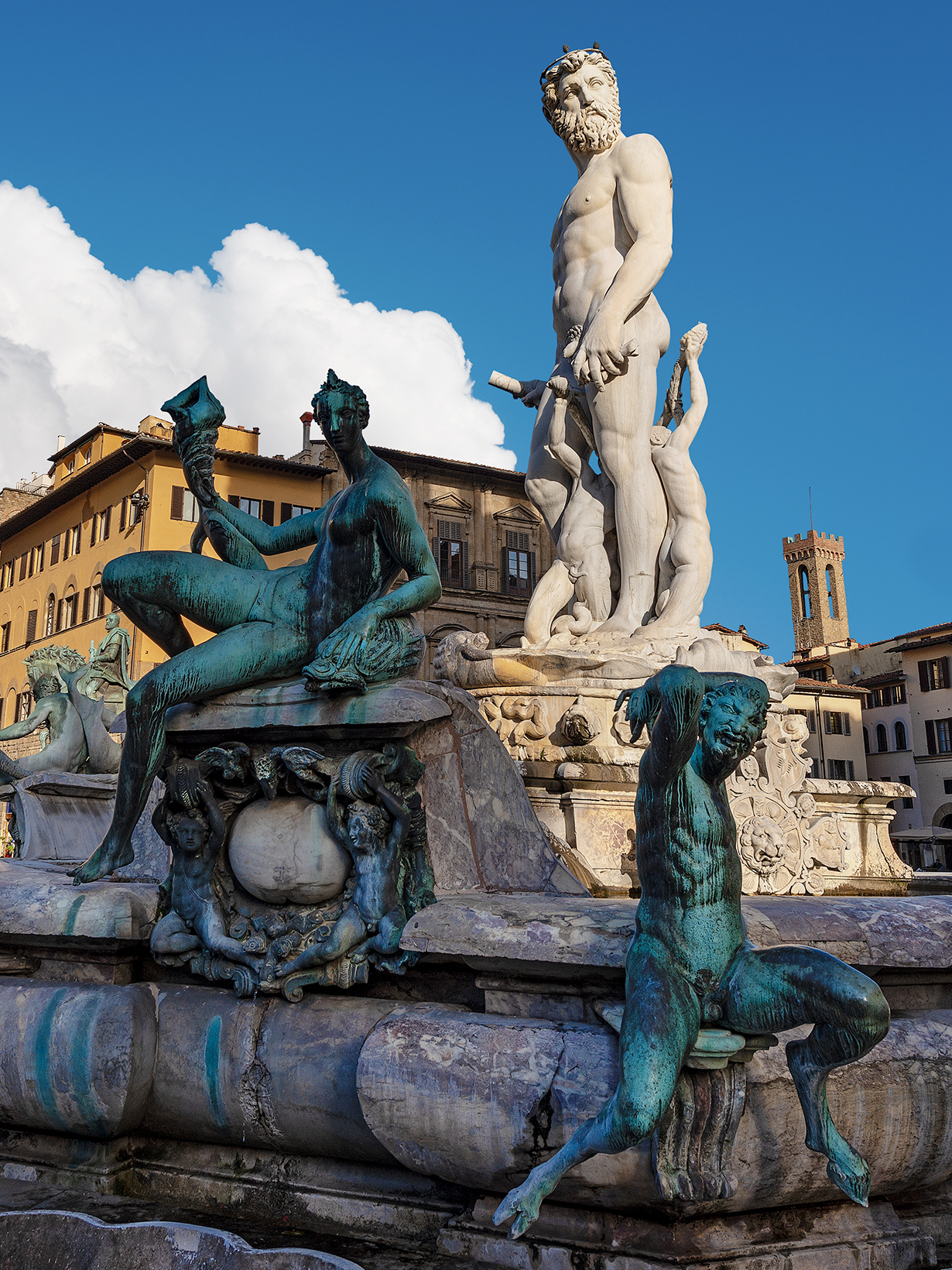
Must-see works of Renaissance art in Florence
Here’s our guide to must-see art in Florence, from famous Renaissance sculptures to spectacularly detailed frescoes.
For art aficionados, few cities compare to Florence. This Italian city—and capital of Tuscany—was the center of the Renaissance in the early 15th century, and much of the art that was created there during that period remains on view today. Want to soak in the beauty of city’s Renaissance art on your next visit to Italy? Here’s our guide to must-see art in Florence, from famous Renaissance sculptures to spectacularly detailed frescoes.

Michelangelo’s David sculpture
Begun in 1501 by a then-26-year-old Michelangelo, this iconic sculpture was completed more than two years later. The 14-foot-tall marble statue of the Biblical hero David is the most famous Renaissance sculpture in Florence—and perhaps even the world—thanks to its flawless execution and staggering level of detail. Travelers can see David’s perfectly chiseled figure—and the sling and stone he used to defeat the giant Goliath—up close at Florence’s Accademia Gallery during an excursion on our Venice, Florence & Rome tour. (Tip: Replicas of Michelangelo’s David stand outside Palazzo Vecchio and in Piazzale Michelangelo.)
David isn’t the only Michelangelo artwork worth seeing at the Accademia Gallery; the museum also houses his four famous unfinished sculptures, known collectively as Prisoners or Slaves. The pieces are said to illustrate Michelangelo’s approach to sculpture, which he described as “taking the figure out of the stone.”
The Birth of Venus, by Sandro Botticelli
Another iconic work of art in Florence that visitors won’t want to miss is The Birth of Venus, which was painted by Sandro Botticelli in 1485. It’s housed among hundreds of important Renaissance artworks inside the Uffizi Gallery and depicts Venus, the goddess of love and beauty, standing atop a giant, floating scallop shell. She’s blown toward land by a pair of winged figures who are said to be Zephyr and Aura—also known as the Winds.
Another can’t-miss Botticelli painting at the Uffizi: Allegory of Spring, or La Primavera, a celebrated piece he painted for a member of Florence’s powerful Medici family.
See both masterpieces during your free day in Florence on our Venice, Florence & Rome tour >

The Last Judgment, by Giorgio Vasari
The Filippo Brunelleschi-designed cupola of Florence’s Cathedral of Santa Maria del Fiore—a.k.a. Il Duomo—is one of the most recognizable structures in the city. Its underside is also where visitors who step inside the cathedral will find massive frescoes of The Last Judgment, which were painted by Giorgio Vasari and Federico Zuccari between 1572 and 1579 and are among the most spectacular Renaissance paintings in Florence. The frescoes blanket 10,500 square feet of surface beneath the dome and depict scenes from heaven and the underworld, plus figures associated with both realms.
Wondering what else to see in the birthplace of the Renaissance? Check out The Go Ahead Travel Guide to Florence >

The Gates of Paradise, by Lorenzo Ghiberti
This set of gilded bronze doors depicts Biblical scenes across 10 panels and were installed at Florence’s 11th-century Baptistery of San Giovanni in 1452. Since then, the doors, which are considered a Renaissance masterpiece and were given their Gates of Paradise nickname by none other than Michelangelo, have withstood centuries’ worth of elemental wear and tear, ranging from major floods to oxidation. Now fully restored, visitors can see the doors at the eastern entrance of the octagon-shaped Baptistery, one of Florence’s oldest churches. (Clad in white Carrara and green Prato marble, the Baptistery, which is located just across from the city’s famous Duomo, is a work of art in its own right.)
Fra Angelico’s frescoes at the San Marco Museum
This 15th-century monastery-turned-museum houses a large collection of precious frescoes painted during the Renaissance by Dominican monk Fra Angelico, who’s said to have thought of painting as a form of prayer. In addition to hallways, staircases, and other spaces throughout the priory, Fra Angelico painted his frescoes—including works like the famous Crucifixion and Annunciation—on walls inside monks’ cells to help enhance their meditation.

Fountain of Neptune, by Bartolomeo Ammannati
Situated smack in the center of Florence’s Piazza della Signoria by the Palazzo Vecchio, this fountain was sculpted by Bartolomeo Ammannati in the 16th century to celebrate the opening of a new aqueduct. At its center, a towering Neptune—god of the sea—stands atop a chariot that’s pulled by four horses and surrounded by several mythological figures. You’ll have your chance to marvel at this marble classic on our Florence: The City Experience tour.
Ready to see famous Renaissance art in real life? Explore our Florence tours >

















































































